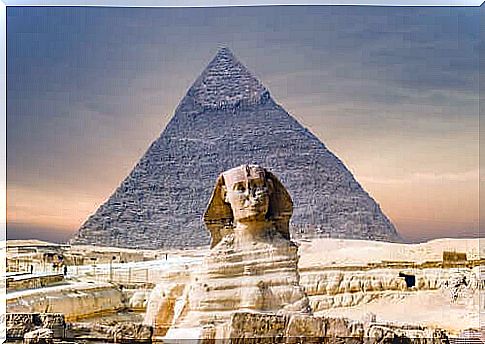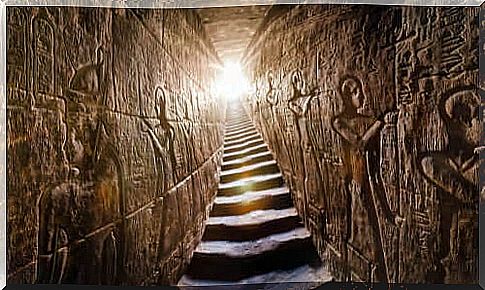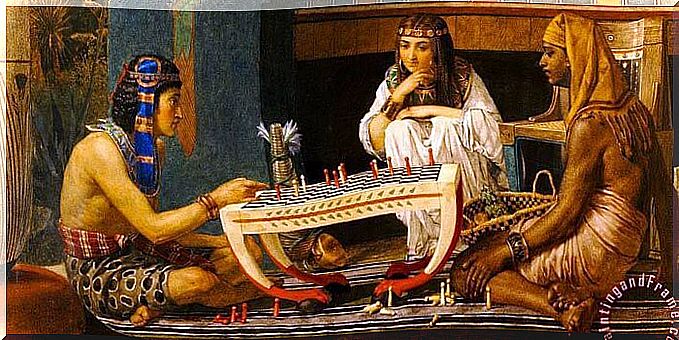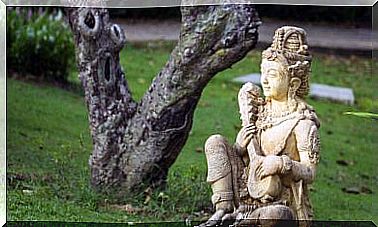Egyptian Culture: 6 Fascinating Curiosities

We have always looked at Egyptian culture with great admiration, shrouded in mystery. We are perhaps talking about the most prosperous civilization that history and humanity have ever known, the one that for years has been the cradle of great thinkers and incredible scientific, technical and academic advances.
After Mesopotamia, Egypt was the second enclave to host the development of written language: let’s talk about the famous hieroglyphs. The term comes from the words hiero (sacred) and glyph (engraved), and follow a structure never before seen in the Mesopotamian territories of Sumer and Acadia.
Although for centuries the practice and interpretation of these iconographic symbols has fallen into oblivion, they are more and more often found passionate. This is due to the re-evaluation that Egyptian culture is experiencing thanks, to a large extent, to globalization and the rise of social networks.

Egyptian culture: 6 curiosities
1. The pyramids were built by free men
The pyramids of Egypt were not built by slaves, as we tend to believe. The men who worked on the project did so under three-month contracts, receiving a salary; moreover, they enjoyed a lot of respect, despite their humble origins.
The admiration they aroused was such that anyone who died while working on the pyramids would be buried in the tombs of the necropolis of Giza. That way, he would always stay close to the pharaohs’ pyramids, which was an honor. Slaves, on the other hand, were usually exploited in domestic work.
2. They loved cats
Many people know of the worship that the Egyptians reserved for cats, but what was their admiration for these animals due to? The Egyptian culture considered cats the reincarnation of the god Ra, in the role of murderer of the serpent Apofis, incarnation, in turn, of chaos and the evil one.
Later, the figure of Ra was associated with that of the goddess Bestet. Protector of domestic hotbeds and goddess of war, this deity made cats sacred and untouchable that, later on, would become pets.
3. They invented cement
This mixture used to create building elements was devised by the Egyptians, who used it to stabilize the foundations of the pyramids. Today, however, there is debate on the possibility that the appearance of cement is due to the Etruscans instead.
The Keope pyramid was the first in which cement was used, around 2600 BC. decoration.
4. Egyptian culture: a much fairer society than the Greek or Roman one
In Ancient Egypt, women enjoyed more rights than their Roman and Greek contemporaries. Egyptian culture contemplated divorce, enjoyed the right of inheritance (as in Celtic culture), and mistreatment was frowned upon.
In addition, women could have their own businesses and various types of jobs. Most of these jobs, however, concerned health and motherhood.

5. The left foot of the statues is always in front of the right one
Looking at any statue built during the golden age of Ancient Egypt you will notice that the left foot is always forward. This is because the Egyptian culture considered the left side to be that of life, because in it is the heart.
When temples were attacked, enemies used to destroy the statues’ legs and left foot. In this way, they symbolically destroyed the life of the pharaoh in question, and he was therefore doomed to eternal oblivion.
6. For the Egyptian culture, red was the color of mourning
The color black, ironically, was associated with luck. This belief originated from the good omen associated with the black color of the Nile bank, which assumed this color thanks to the abundant presence of silt, which announced the abundance of the next harvest.
The red color, for its part, was associated with the coloring of the inside of the coffins. Furthermore, it was the color chosen to represent the fury of life, the aggressiveness of the struggle and, in a less symbolic way, the blood of the animal sacrifices that the more affluent families could afford at funerals.
Egyptian culture was the means by which numerous cultural aspects (and not, but which today we consider as such) have developed. Ancient Egyptian medical and scientific innovations continue to be at the forefront when compared to any other civilization of the same period. Its impressive architecture is also considered one of the most surprising examples of megalomania ever.









